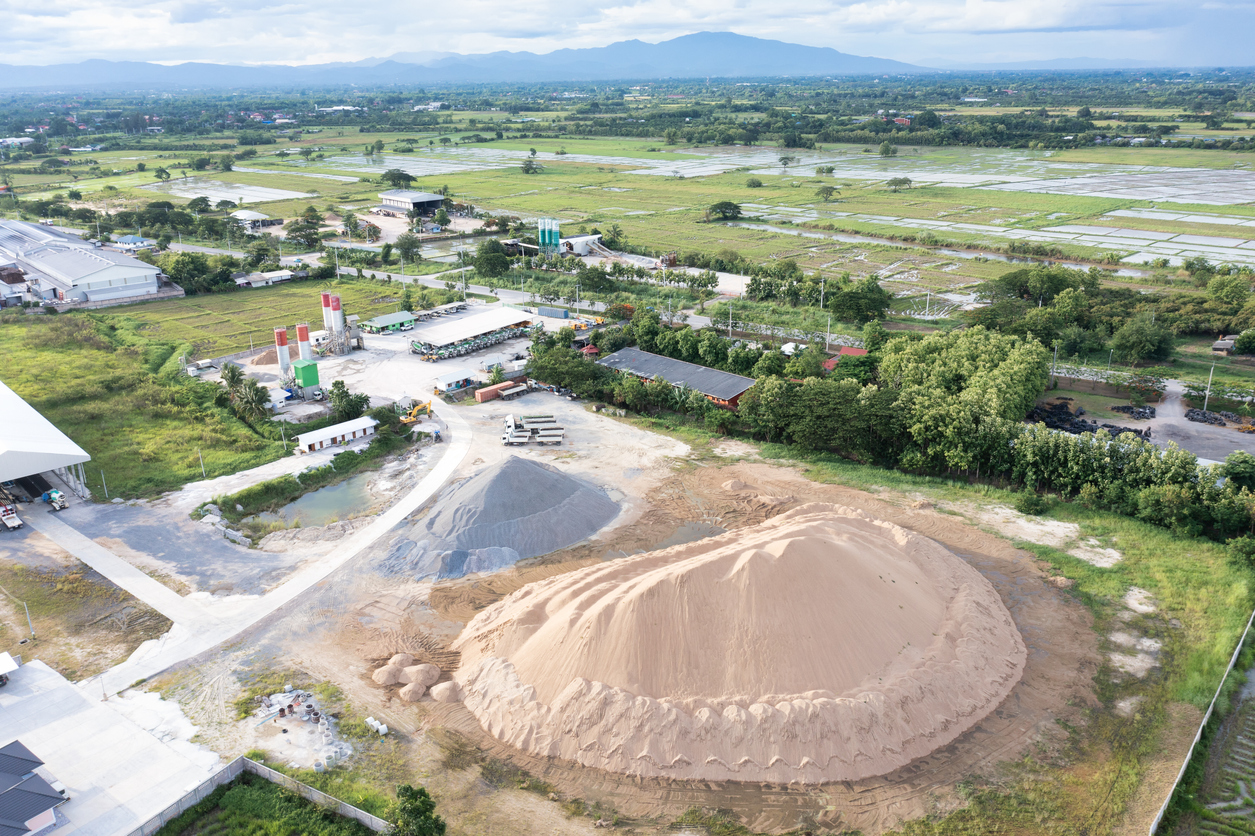Silica Sand: The Versatile Material for Multiple Industries
Silica Sand: The Versatile Material for Multiple Industries
Welcome to our blog post on one of the most versatile materials known to man – silica sand! From construction and manufacturing to oil and gas, this humble mineral plays a crucial role in multiple industries. But what makes silica sand so special? Join us as we delve deep into its fascinating properties, endless applications, and how it has revolutionized various sectors around the world. So grab a cup of coffee, sit back, and prepare to be amazed by the incredible versatility of silica sand!
Introduction to Silica Sand
Introduction to Silica Sand
Silica sand is a versatile material that has been used for centuries in a wide range of industries. It is one of the most abundant minerals on earth and can be found in various forms, from fine white sand to coarse grains. This naturally occurring mineral is composed of silicon dioxide (SiO2) and is also known as industrial sand or quartz sand.
Silica sand has unique properties that make it an essential material for multiple industries, including construction, glassmaking, water filtration, and hydraulic fracturing. Its high purity and physical characteristics have made it a sought-after resource for various applications.
Formation of Silica Sand
Silica sand is formed when quartz rock undergoes weathering processes such as erosion and sedimentation. These processes break down the larger pieces of quartz into smaller grains, resulting in silica sand deposits found in riverbeds, beaches, and deserts.
The size and shape of silica sand particles depend on the location where it was formed. For example, beach sands are usually rounder compared to desert sands which tend to be more angular due to wind erosion.
Composition of Silica Sand
As mentioned earlier, silica sand is primarily composed of silicon dioxide (SiO2), with trace amounts of other elements such as iron oxide (Fe2O3) and aluminum oxide (Al2O3). The purity levels can range from 95% to over 99%, depending on the source.
– Definition and composition
Silica sand is a naturally occurring granular material composed of finely divided rock and mineral particles. It is primarily made up of silicon dioxide (SiO2) and can also contain small amounts of other minerals, such as feldspar, mica, magnetite, and garnet. This composition gives silica sand its distinct properties that make it a versatile material for multiple industries.
The chemical formula for silica sand is SiO2, which consists of one atom of silicon and two atoms of oxygen. This combination makes up about 70-80% of the Earth’s crust and is one of the most abundant minerals in the world. Silica sand can be found in different forms including quartz crystals, glassy or amorphous solids, and as a major component in many types of rocks like granite, sandstone, and quartzite.
One of the unique characteristics of silica sand is its high purity level. It has minimal impurities compared to other minerals found in nature. The purity levels can range from 95% to 99%, making it an ideal raw material for various industrial processes.
Silica sand also has excellent physical properties that contribute to its versatility. It is a hard and durable material with high compressive strength and low solubility in water. These qualities make it resistant to weathering and erosion, making it an ideal choice for construction projects such as building foundations and roadbeds.
– Sources of silica sand
Silica sand is a naturally occurring mineral that is commonly used in various industries due to its unique properties. This versatile material has a wide range of applications, from construction and glassmaking to water filtration and foundry work. In this section, we will explore the different sources of silica sand and how they are extracted.
1. Sand Dunes
One of the primary sources of silica sand is sand dunes, which are large deposits of quartz-rich sand that have accumulated over thousands of years through natural processes such as erosion and weathering. These dunes can be found in coastal regions or desert areas where there is little vegetation to hold the sand in place.
To extract silica sand from these dunes, large-scale mining operations are carried out using heavy equipment such as bulldozers and dredgers. The top layer of soil and vegetation is removed first, followed by deeper layers until the desired level of purity is reached. This process can also involve blasting with explosives to loosen the sand before it is excavated.
2. Beaches
Silica sand can also be found on beaches, where it naturally accumulates through wave action and winds carrying it from nearby rocks or cliffs made up of quartz-containing minerals. Unlike dune deposits, beach sands tend to have higher levels of impurities due to their exposure to water and other elements.
Uses in Construction Industry
Silica sand, also known as industrial sand, is a versatile material that has numerous applications in the construction industry. Its unique properties make it an ideal choice for various construction projects, ranging from residential to commercial and even infrastructure development. In this section, we will explore some of the key uses of silica sand in the construction industry.
1. Concrete production:
One of the most common uses of silica sand in construction is its incorporation into concrete mixes. The fine particles of silica sand act as a filler and help to improve the strength and durability of concrete. It also helps to reduce shrinkage and cracking during curing, thus making it an essential component in high-quality concrete production.
2. Mortar production:
Similar to its use in concrete, silica sand is also used in mortar production. It helps to enhance the workability and bonding properties of mortar mixtures by filling any voids or gaps between other aggregate materials.
3. Asphalt mixtures:
Silica sand is often added to asphalt mixtures as a fine aggregate material. This improves the stability and durability of roads, parking lots, and other paved surfaces. Silica sands with specific grain sizes are preferred for this application as they provide better traction and resistance against wear and tear.
4. Landscaping:
In addition to structural purposes, silica sand can also be used for landscaping projects such as golf courses, playgrounds, and parks. The fine particles help to create a stable base layer that resists erosion while providing proper drainage for plant growth.
– Strength and durability in concrete and mortar
Silica sand is a versatile material that has been widely used in various industries due to its strength and durability when mixed with concrete and mortar. This high-quality sand is composed of tiny granules of quartz, which make it an ideal choice for construction projects.
When added to concrete, silica sand acts as a filler material, increasing the overall strength and stability of the mixture. The small size and uniform shape of the grains allow them to interlock with each other, creating a dense and compact structure. This results in strong and durable concrete that can withstand heavy loads and extreme weather conditions.
Moreover, silica sand helps to reduce shrinkage and cracking in concrete. As the grains fill up any voids or gaps within the mixture, it prevents water from getting trapped inside, which can lead to cracks forming during the curing process. This makes silica sand a crucial component for long-lasting concrete structures.
Similarly, when used in mortar, silica sand provides excellent binding properties that improve its durability. Mortar is commonly used as a bonding agent between bricks or stones in masonry work. By adding silica sand to the mix, it increases cohesion between particles and enhances adhesion to surfaces, resulting in stronger bonds.
In addition to its strength-enhancing properties, silica sand also contributes to the overall durability of concrete and mortar by making them more resistant to chemical corrosion. The inert nature of quartz makes it highly resistant to acids and alkalis present in industrial environments or harsh weather conditions.
– Landscaping and paving applications
Silica sand is a versatile material that has numerous applications in various industries, and one of the most popular uses of this mineral is in landscaping and paving. Due to its unique properties, silica sand is ideal for creating beautiful outdoor spaces, adding value and visual appeal to residential and commercial properties alike.
Landscaping with Silica Sand:
Silica sand is an essential component in creating well-maintained and attractive outdoor landscapes. The fine particles of silica sand provide excellent drainage capabilities, making it an ideal choice for use in gardens, lawns, and other areas that require proper water management. This helps prevent waterlogging and soil compaction, ensuring healthy plant growth.
The texture of silica sand also makes it a great choice for mixing with soils. It can improve the overall quality of soil by increasing porosity and allowing for better air circulation. This allows plant roots to grow freely without any obstructions, resulting in healthier plants with stronger root systems.
Another significant advantage of using silica sand in landscaping is its ability to retain moisture. This means that even during hot summers or periods of drought, the soil will stay hydrated for longer periods without frequent watering. As a result, less water is wasted, making it an environmentally friendly option.
In addition to these functional benefits, silica sand can also enhance the aesthetic appeal of landscapes by providing a clean and uniform look when used as a top dressing on flower beds or between pavers.
Applications in Glass Production
Silica sand is a versatile material that has numerous applications in various industries, and one of the most significant uses of this mineral is in glass production. Glass, an essential component in modern society, has been made from silica sand for centuries. The unique physical and chemical properties of silica sand make it an ideal raw material for glass manufacturing, with the ability to produce different types of glass.
One of the primary uses of silica sand in glass production is its role as a major ingredient in making clear or transparent glass. This type of glass is used to make windows, mirrors, drinking glasses, and other household items. Silica sand provides the necessary clarity and transparency required for these products while also adding strength to the final product.
Additionally, silica sand is also used in making colored or tinted glass. By adding different metal oxides such as iron oxide or copper oxide to molten silica sand during the manufacturing process, various hues and shades can be achieved. Colored glasses are commonly used for decorative purposes, such as stained-glass windows or ornamental vases.
The chemical composition of silica sand also makes it suitable for producing heat-resistant and shatterproof glasses. This type of glass is commonly used in laboratory equipment like beakers and test tubes where high temperatures are involved. It is also widely utilized in industrial settings for furnace doors, chimney flues, and other high-temperature applications.
In addition to its physical properties, another advantage of using silica sand in glass production is its abundance and availability.
– Importance of high purity silica sand
Silica sand is a versatile material that has various industrial applications, making it an essential mineral resource. One of the key factors that contribute to its versatility and effectiveness is its high purity. High purity silica sand refers to silica sand with a high level of silica content, typically above 99%. This type of silica sand is crucial for many industries due to its unique properties and benefits. In this section, we will delve into the importance of high purity silica sand in various industries.
1. Glass Manufacturing:
High purity silica sand is a fundamental ingredient in glass manufacturing. It is used as a primary raw material for producing flat glass, fiberglass, containers, and specialty glass products like solar panels and LCD screens. The high level of purity in silica sand ensures that the final product has excellent optical transparency and superior mechanical strength.
2. Foundry Casting:
Foundries use high purity silica sand as a molding agent because it can withstand extremely high temperatures without deforming or melting. Its low thermal expansion coefficient also makes it ideal for creating intricate molds with precise dimensions. Additionally, the uniform grain size distribution in high purity silica sand enables smooth casting surfaces, resulting in better quality finished products.
3. Construction Industry:
Silica sand plays a vital role in the construction industry as it is used as an aggregate material for concrete production. The high purity levels ensure that the concrete mix has maximum strength and durability while providing an aesthetically pleasing finish to buildings and other structures.
– Different types of glass made with silica sand
Silica sand is a versatile material that is used in various industries for its unique properties and abundance. One of the most common uses of silica sand is in the production of glass. Glass, as we know it, is made primarily from silica sand mixed with other raw materials such as soda ash and limestone. However, depending on the type of glass required, the composition and manufacturing process may vary.
Let’s take a closer look at the different types of glass made with silica sand:
1. Soda-Lime Silica Glass:
Also known as float glass or clear glass, this type of glass constitutes about 90% of all manufactured glasses. It is produced by melting a mixture of silica sand, soda ash (sodium carbonate), and limestone at high temperatures. This process creates a clear and transparent glass that can be further processed into various products like windows, mirrors, tableware, etc.
2. Borosilicate Glass:
Borosilicate glass has a higher content of boron oxide (5-13%) compared to soda-lime-silica glass (<0.1%). The addition of boron oxide makes this type of glass more resistant to thermal shock and chemical corrosion than ordinary glasses. Thus it finds applications in laboratory equipment, cookware, lighting fixtures, etc.
Role in Foundry Industry
Silica sand is a versatile material that has multiple applications in various industries, and the foundry industry is no exception. Foundries are responsible for producing metal castings, which are used in a wide range of products such as automobiles, machinery, and household appliances. Silica sand plays a crucial role in the foundry industry as it is an essential component of the casting process.
The primary use of silica sand in the foundry industry is for making molds and cores. Molds are used to shape molten metal into desired forms, while cores are used to create hollow spaces within the castings. Both molds and cores require high-quality silica sand with specific properties to ensure a successful casting process.
One of the most critical properties of silica sand used in foundries is its high refractoriness. Refractoriness refers to the ability of a material to withstand high temperatures without melting or deforming. In the foundry industry, molten metals can reach extremely high temperatures ranging from 1300°C to 1600°C. Therefore, silica sand with a high melting point (above 1700°C) is required to maintain its structure during the casting process.
In addition to being refractory, silica sand also has excellent thermal conductivity. This property allows for efficient heat transfer between the molten metal and the mold or core during casting. The even distribution of heat prevents uneven cooling and solidification of the metal, resulting in high-quality castings.
– Molding and casting applications
Molding and casting are two versatile processes used in a wide range of industries, from automotive to construction to art and design. These techniques involve creating a mold or pattern of an object and then pouring a liquid material into it, which hardens and takes the shape of the mold. Silica sand is an essential component in both molding and casting applications, due to its unique properties that make it suitable for various purposes.
One of the most common uses of silica sand in molding is foundry work. Foundries use silica sand as the primary molding material because of its high melting point (over 1700°C) and ability to withstand extreme temperatures without deforming. The sand particles act as heat absorbers, allowing for precise control over the cooling rate of molten metals, ensuring consistent quality in castings. Additionally, silica sand has excellent flowability, making it easy to fill intricate molds with complex shapes.
In addition to metal casting, silica sand also plays a crucial role in plastic and rubber manufacturing industries. In these applications, a mixture called resin-bonded sand is used instead of pure silica sand. This mixture contains 90-95% silica sand bonded together with resins such as phenolic or furan. The resin acts as an adhesive between the grains of sand, forming a strong mold that can withstand high-pressure injections during plastic or rubber production.
– Advantages over other molding materials
Silica sand is a versatile material that has gained popularity in various industries due to its unique properties and advantages over other molding materials. In this section, we will discuss the top benefits of using silica sand compared to other molding materials.
1. High Strength and Durability:
Silica sand is known for its high strength and durability, making it an ideal choice for molding applications. It can withstand extreme temperatures, pressure, and mechanical stress without losing its shape or integrity. This makes it suitable for use in industries such as construction, foundry, and manufacturing where strong and durable materials are required.
2. Low Expansion Rate:
One significant advantage of silica sand over other molding materials is its low expansion rate. Silica sand has a very low coefficient of thermal expansion, meaning it does not expand significantly when exposed to temperature changes. This property makes it perfect for use in precision casting processes where dimensional accuracy is crucial.
3. Cost-effective:
Compared to other molding materials like metal alloys or plastics, silica sand is relatively inexpensive. It is abundantly available in nature and can be mined at a lower cost than other raw materials used in the manufacturing industry. Additionally, the production process for silica sand does not involve any complex procedures or expensive equipment, making it a cost-effective option for many industries.
Other Industrial Uses
Silica sand is a versatile material that has numerous industrial uses beyond the construction and glass industries. It is widely used in various sectors such as foundry, chemical manufacturing, and oil and gas production. Let’s explore some of the other industrial uses of silica sand:
1. Foundry Industry:
One of the biggest industrial applications of silica sand is in foundries where it is used as a molding material for casting metals. The high purity and thermal stability of silica sand make it ideal for this purpose. It helps to produce castings with smooth surfaces, dimensional accuracy, and high strength.
2. Chemical Manufacturing:
Silica sand has many chemical properties that make it useful in various manufacturing processes. It is used as an essential ingredient in the production of silicones, silicon carbide, and various other chemicals. Silica sand also acts as a catalyst in several reactions due to its highly porous structure.
3. Oil and Gas Production:
In the oil and gas industry, silica sand plays a crucial role in hydraulic fracturing or fracking process. It is injected into rock formations under high pressure to create fractures through which oil or gas can flow more freely. Silica sand also helps to keep these fractures open, allowing for more efficient extraction.
4. Water Filtration:
Silica sand is commonly used as a filtration medium for water treatment systems due to its ability to remove impurities from water effectively. Its large surface area traps particles and contaminants while allowing clean water to pass through.







Comments are closed.